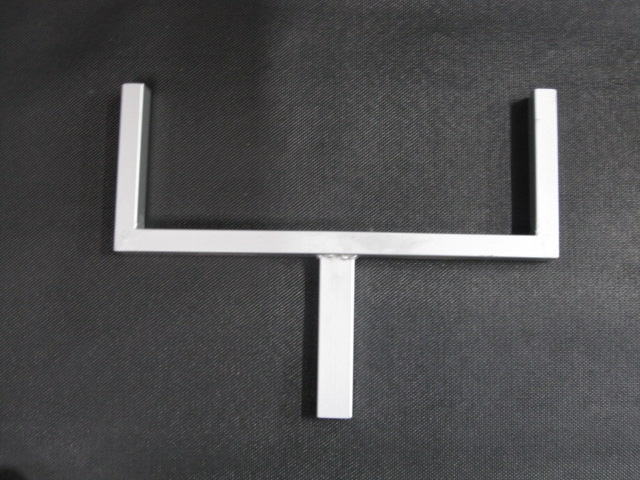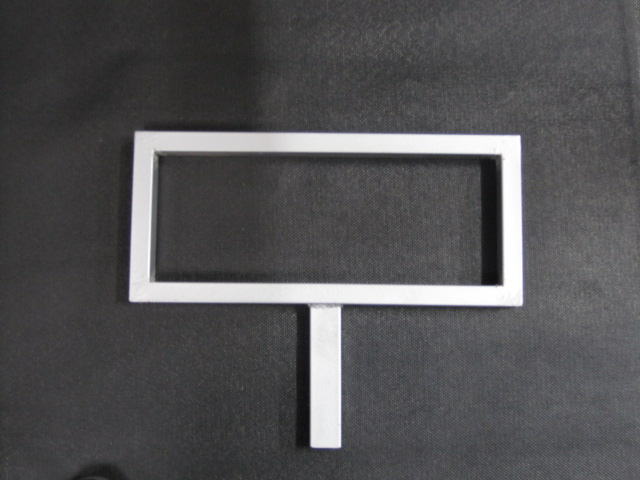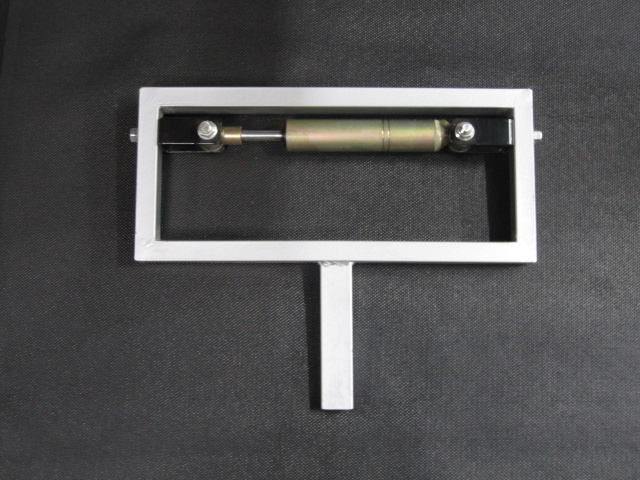Modme's OEM Bracing Project
#16
I don't think I can agree that the OEM bracing is stronger than the GTSpec bars. It may be, it may not be; but it would be an incorrect assumption to correlate weight with rigidity. Resistance to deflection is based not only on the inherent properties of the material itself but also the shape of the object. The OEM bracing is terraced. You can see the layering of it and the vertical walls are what give it rigidity in the y-direction while the flat horizontal parts give it rigidity in the x-direction, kind of like an H-beam. The GTSpec braces are hollow so it follows the mechanical properties of a hollow pipe. Just because it is hollow though does not mean it is weak; the most resistance to deflection is found within the outer perimeter of any shape. So while the GTSpec bar is hollow and may have lost some inherent strength the decrease is not linear. A pipe that is half the weight of a similarly shaped rod will only lose about say 10% of its strength.
There are advantages and disadvantages to both types of designs. The OEM brace might be easier to fabricate, since you can just stamp it through a machine press. It's def cheaper than GTSpec but is also heavier. The GTSpec bars are lighter but are also more expensive. In conclusion, it would be very incorrect to compare the braces to each other based solely on weight because their designs are so radically different. If we really wanted to know the true answer we would need someone to model both parts in SolidWorks (3D engineering modeling software) and have someone do some FEA analysis on the parts. This would give us a better approximation of rigidity.
TL;DR - weight does not equal strength. Mechanical property of material and shape are both huge contributing factors to strength and rigidity.
There are advantages and disadvantages to both types of designs. The OEM brace might be easier to fabricate, since you can just stamp it through a machine press. It's def cheaper than GTSpec but is also heavier. The GTSpec bars are lighter but are also more expensive. In conclusion, it would be very incorrect to compare the braces to each other based solely on weight because their designs are so radically different. If we really wanted to know the true answer we would need someone to model both parts in SolidWorks (3D engineering modeling software) and have someone do some FEA analysis on the parts. This would give us a better approximation of rigidity.
TL;DR - weight does not equal strength. Mechanical property of material and shape are both huge contributing factors to strength and rigidity.
#18
That's correct, many factors contribute to the rigidity of the brace. In my opinion, the OEM brace is a better design. It has 3 mounting points and a triangular shape that would prevent more flex than a narrow bar that mounts at 2 points. The thicker gauge steel should also contribute to a greater rigidity.
Although not scientific, if you compare the two designs visually and by tactile, the OEM brace feels much more superior.
Although not scientific, if you compare the two designs visually and by tactile, the OEM brace feels much more superior.
#19
That's correct, many factors contribute to the rigidity of the brace. In my opinion, the OEM brace is a better design. It has 3 mounting points and a triangular shape that would prevent more flex than a narrow bar that mounts at 2 points. The thicker gauge steel should also contribute to a greater rigidity.
Although not scientific, if you compare the two designs visually and by tactile, the OEM brace feels much more superior.
Although not scientific, if you compare the two designs visually and by tactile, the OEM brace feels much more superior.
 Does this stuff fit on a sedan? I know the GTSpec stuff is interchangeable between coupe/sedan so my assumption would be yes but I don't know for sure.
Does this stuff fit on a sedan? I know the GTSpec stuff is interchangeable between coupe/sedan so my assumption would be yes but I don't know for sure.
#22
#23
For this brace, I would agree the design is better. But the weight penalty might offset the benefits.
There are many cars out there where people take off the heavy factory bracing and put on lightweight aftermarket bracing. And they spend a lot of money to do this.
Like I said, for this particular brace, the stock design might be sturdier and cheaper. I would still change it out for a brace that accomplishes the same task effectively while saving me a lot of weight.
There are many cars out there where people take off the heavy factory bracing and put on lightweight aftermarket bracing. And they spend a lot of money to do this.
Like I said, for this particular brace, the stock design might be sturdier and cheaper. I would still change it out for a brace that accomplishes the same task effectively while saving me a lot of weight.
#24
Now here is a mod that could be considered stock since it uses stock parts. I ma definately interested in this. Sub'd.
If I ever get the time I will see if I can model the 2 braces, it would be interesting to see.
If I ever get the time I will see if I can model the 2 braces, it would be interesting to see.
#27
i'm interested in your impressions also. The only thing that I'm wondering about the harmonic dampers is that it shows the movement of the car's front and rear in a vertical plane. How does a damper mounted from the left to right plane affect the flagellation as shown in the video? The only thing that I can see keeping the car from flagellating is solid lateral brace from front to back as opposed to the left and right.
#28
No real driving impression yet. The bar is not fully secured and the triangular brace is not welded yet. I should be finishing this up next week.
Here's a good description I found of how the dampers work:
"So how does it all actually work? The following pictures will illustrate that a car's front towers is not too dissimilar from a tuning fork. Now when you strike the fork, you tend to get a nice ring out of it. So imagine pieces of tubular steel welded up like a giant tuning fork. When you hit it with a hammer, the fork will emit a really loud right. The next step in the demonstration is where the top of the fork is boxed off, like as if a strut brace that was installed between your car's strut towers. The next time you hit it with a hammer, it should resonate with a lower dull tone. The final step is to have a damper installed between the forks. At the moment a hammer hits the metal piece, it should not emit any noise at all. People have described it like hitting a pillow with a hammer."

Ding!

Dong!

*Silence*
Here's a good description I found of how the dampers work:
"So how does it all actually work? The following pictures will illustrate that a car's front towers is not too dissimilar from a tuning fork. Now when you strike the fork, you tend to get a nice ring out of it. So imagine pieces of tubular steel welded up like a giant tuning fork. When you hit it with a hammer, the fork will emit a really loud right. The next step in the demonstration is where the top of the fork is boxed off, like as if a strut brace that was installed between your car's strut towers. The next time you hit it with a hammer, it should resonate with a lower dull tone. The final step is to have a damper installed between the forks. At the moment a hammer hits the metal piece, it should not emit any noise at all. People have described it like hitting a pillow with a hammer."

Ding!

Dong!

*Silence*
#29
Driving impressions:
It is very difficult to quantify and review suspension modifications. When you have to judge something by feeling, there's always a placebo effect that may confound the results.
With the disclaimer, I definitely felt a change in suspension characteristics after all the modifications. There is a significant difference in which the suspension adapt to bumps and imperfections on the road. The car "bounces" a lot less after going over a bump. Car seems to be able to adapt to road changes a lot quicker. This improvement is probably due to the performance dampers cancelling out the vibrations throughout the car's chassis.
This impression is only after driving 20 miles on the highway, without pushing the car's suspension. I am waiting on one more brace and will update after more driving.
It is very difficult to quantify and review suspension modifications. When you have to judge something by feeling, there's always a placebo effect that may confound the results.
With the disclaimer, I definitely felt a change in suspension characteristics after all the modifications. There is a significant difference in which the suspension adapt to bumps and imperfections on the road. The car "bounces" a lot less after going over a bump. Car seems to be able to adapt to road changes a lot quicker. This improvement is probably due to the performance dampers cancelling out the vibrations throughout the car's chassis.
This impression is only after driving 20 miles on the highway, without pushing the car's suspension. I am waiting on one more brace and will update after more driving.
#30
No real driving impression yet. The bar is not fully secured and the triangular brace is not welded yet. I should be finishing this up next week.
Here's a good description I found of how the dampers work:
"So how does it all actually work? The following pictures will illustrate that a car's front towers is not too dissimilar from a tuning fork. Now when you strike the fork, you tend to get a nice ring out of it. So imagine pieces of tubular steel welded up like a giant tuning fork. When you hit it with a hammer, the fork will emit a really loud right. The next step in the demonstration is where the top of the fork is boxed off, like as if a strut brace that was installed between your car's strut towers. The next time you hit it with a hammer, it should resonate with a lower dull tone. The final step is to have a damper installed between the forks. At the moment a hammer hits the metal piece, it should not emit any noise at all. People have described it like hitting a pillow with a hammer."

Ding!

Dong!

*Silence*
Here's a good description I found of how the dampers work:
"So how does it all actually work? The following pictures will illustrate that a car's front towers is not too dissimilar from a tuning fork. Now when you strike the fork, you tend to get a nice ring out of it. So imagine pieces of tubular steel welded up like a giant tuning fork. When you hit it with a hammer, the fork will emit a really loud right. The next step in the demonstration is where the top of the fork is boxed off, like as if a strut brace that was installed between your car's strut towers. The next time you hit it with a hammer, it should resonate with a lower dull tone. The final step is to have a damper installed between the forks. At the moment a hammer hits the metal piece, it should not emit any noise at all. People have described it like hitting a pillow with a hammer."

Ding!

Dong!

*Silence*
I agree with you on the first point, bracing,
But:
Once you have braced it, you have now changed the harmonic tuning.
The harmonic damper is no longer functional, it was designed and tuned without bracing.
It (the OEM damper) was designed to dampen the "ding", not the "dong".
A custom damper, tuned to the now braced frame will now have to be designed.
.



